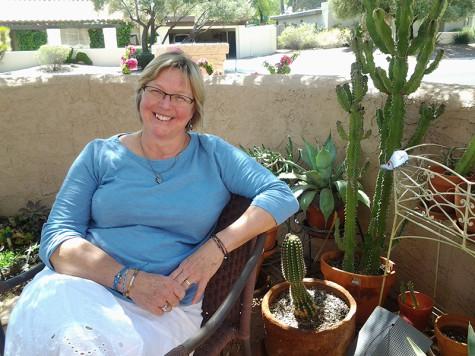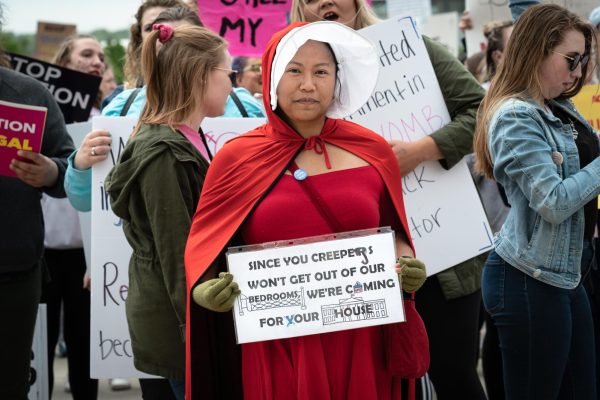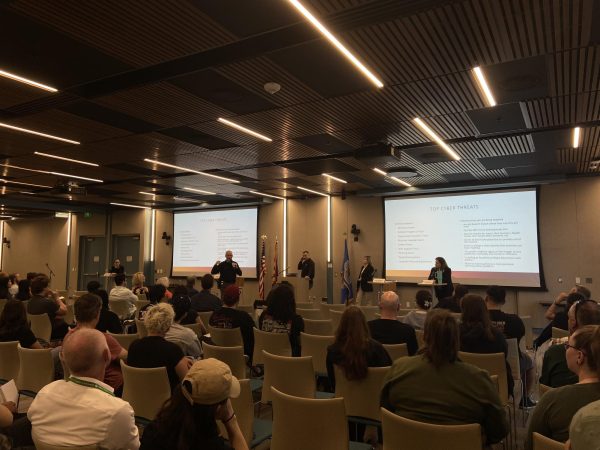Loving Hands Home
Certified nurse midwife brings personalized care home
May 16, 2014
When certified nurse-midwife Lynette Casey watched her first patient and baby go home after a natural, intervention-free birth at a freestanding birth center in Raleigh, North Carolina, she was deeply moved.
“This makes (childbirth) normal,” she thought to herself. “This makes (pregnancy and childbirth) not an illness or a medical procedure.”
Years of training as a nurse and midwife in addition to her own birth experiences gives Casey a keen appreciation for the truly organic process of childbirth. She developed a deep respect for the natural condition of pregnancy and what she perceives to be the sanctity of childbirth.
“I personally think birth is sacred. At the very least, let’s say it is personal and intimate. Why can’t we let it be that way? ” says Casey.
Casey’s determination to provide women with personalized perinatal care including a successful, safe birth experience inspired her to create Loving Hands Home Birth. With an office and examination room in her home near 32nd Street and Shea Boulevard, Loving Hands Home Birth provides well-woman care, prenatal and postnatal care, and childbirth at home.
“The birth center births were so lovely and normal and I really ached to get back to that—so here I am starting a home birth practice,” says Casey.
Opening her own practice gives Casey the opportunity to practice nurse-midwifery much in the same way as she did in the freestanding birth centers. After moving to Phoenix in 2000, she spent over 13 years working at Bethany Women’s Health Center; the first six included deliveries in Phoenix’s only freestanding birth center, Bethany Birth Center. After Bethany Birth Center closed, Casey continued with the practice now located in Phoenix Baptist hospital until January of this year. She has also “caught” babies at St. Joe’s and John C. Lincoln hospitals.
In the hospital environment, Casey found it was becoming increasingly difficult to take care of her patients according to their needs. Strict guidelines and routine procedures were pushed ahead of individual preferences, causing women and their families to lose control over decisions about their care. Some routine procedures, such as continuous fetal monitoring, withholding food, limiting ambulation and other restrictions were not only making birth more and more a medical procedure, but were often contributing to some of the problems the procedures were designed to detect.
“One intervention leads to another intervention, and then it snowballs,” explains Casey. “We’re going to make you stay in bed on the monitor. That makes labor longer. Now, we’re going to have to speed it up. Now, we’ve stressed the baby by giving you too many contractions.”
Casey believes that continuous external fetal monitoring has contributed to our nation’s soaring Cesarean rate and costs insurance companies millions of unnecessary dollars.
“They (hospitals) charge a fortune for monitoring and it’s not even necessary in most cases,” says Casey.
The last birth Casey attended before opening her own practice found her in the role of a doula, a trained and experienced professional who supports women during pregnancy and childbirth. She remembers arriving at the hospital with the expectant mom who was advanced in labor and extremely close to delivery. They were greeted by paperwork, as is not uncommon, but the barrage of questions to a laboring woman in transition was in Casey’s view, ridiculous.
“’Have you had a flu shot? Have you had your TDAP? Do you have electricity at home? Have you done this and have you done that?’ She’s eight centimeters dilated and this is her fifth delivery. She’s about to push a baby out and you’re worried about whether she’s had a stinking flu shot. Can you respond to what she’s feeling instead of doing what your computer is asking you? Can we ask her this stuff afterwards? It made me nuts,” recalls Casey.
Casey feels that the constant pressure to make money for the practice was also compromising the care she was able to provide women and their babies.
“I was doing 10-15 minute visits. Policies were being put into place to cover the nurses, the doctor and the hospital—none of it was mom- and baby-centered. I didn’t feel like it was enough,” said Casey.
The difference between following hospital protocol and being able to give personal, individualized care is as clear to Casey as night and day.
“(In my home practice), my last visit lasted two hours. We sat out front and talked and then we came in and listened to the baby,” recalls Casey. She also appreciates how important it is for mother and baby bonding and encouraged, supported breastfeeding.
Casey is more than enthused about the quality and the variety of care she can administer in her home birth practice. Because she is a CNM, she has prescriptive authority. She can give injections to numb and suture in the event of a tear. She can give antibiotics if needed. She can write prescriptions for birth control or administer birth control devices. She is fully equipped for neonatal resuscitation and can carry oxygen to her births.
She is also free to incorporate homeopathic remedies, acupressure, herbs and massage.
“That’s the cool thing about doing all of this,” says Casey. “Setting up, getting ready and being able to incorporate both things: everything medical I have learned over the years and the natural stuff, too, the things we can’t do at the hospital.”
Casey is quick to point out that not all moms want to give birth outside the hospital nor should any cases that include high risk situations consider home birth an option. If a mom wants the option of having an epidural, for example, she will have to give birth in a hospital.
“That’s what I tell my students in the classes I teach,” said Casey. “Everybody’s birth is different and you do what you need to do. If you need to have an epidural, it’s your choice. Just do it with knowledge and consent.”
Though not all insurance companies cover out-of-hospital births, expectant parents would do well to compare the cost of a traditional hospital birth and home birth.
“I heard of an article about how expensive hospital births have become in Phoenix, anywhere from $16,000-$30,000. That’s just the birth. That’s not your doctor bill. My fee is $4,000. That includes prenatal care, birth, postpartum care, home visits and four massages. So, for people who may have really high deductibles, it’s even cheaper to pay me rather than go to the hospital,” says Casey.
She also allows her clients to pay her fee over time. If they get it paid off by a certain point (32 or 36 weeks into the pregnancy), they get a 15% discount.
Casey encourages expectant mothers and their partners to be diligent about educating themselves as to their choices in the birth experience. Christy Henderson of Coolidge, Arizona who recently gave birth in The Phoenix Indian Medical Center attended by certified nurse-midwives echoes the same sentiment.
“Every birth and every mom is different; you need to be able to choose your care for yourself, and have those choices respected,” said Henderson.
Henderson and her husband, Dave, had very specific choices made going in to the birth process. They found the setting they chose would allow them the freedom to exercise those choices or change them if need be.
“They were extremely respectful of my birth plan. My delivery was not treated like a medical disorder and that was very important to me. I walked or soaked in a tub for most of my labor,” said Henderson. “I listened to my body and did what felt natural, which was encouraged as well. It was a beautiful experience, even if it was painful and exhausting.”
She feels the staff of nurse-midwives had a tremendous impact on her positive outcome.
“I can’t praise my nurses and midwives enough, there were so many babies born that day but they took such good care of me,” said Henderson. “I had everything I wanted—home style holistic midwife-attended birth in a hospital setting for back up; just right for me.”
For nurses or nursing students who may want to become certified nurse midwives, Casey recommends they work in labor and delivery to get some experience and then go into a midwifery program. Paradise Valley Community College’s nursing program provides a foundation for nursing students interested in this career path. Nelly Peterson, PVCC Director of Nursing, highlights some of the goals for such a student.
“A student with an associate of applied science needs to pursue a bachelor of science in a nursing degree if he/she wants to be a certified nurse-midwife. After the BSN, he or she can pursue a master’s degree and have a specialty in nurse-midwifery. After passing certification, they should become labor and delivery nurses to develop expertise in becoming nurse-midwives,” explains Peterson.

After getting the education and training as a nurse-midwife, the nurse takes the certification exam specific for this specialty.
Peterson has words of advice for those who would love obstetrical nursing and want to pursue midwifery.
“Go for it!” she said.
Casey is very excited to watch her home birth business establish roots and grow. It is a career change that allows her passion for safe, natural birth experiences to thrive.
“(Childbirth) is a miracle. All it takes is patience and a little support,” says Casey.
Casey can be reached at lynnette@lovinghandshomebirth.com or on Facebook.












